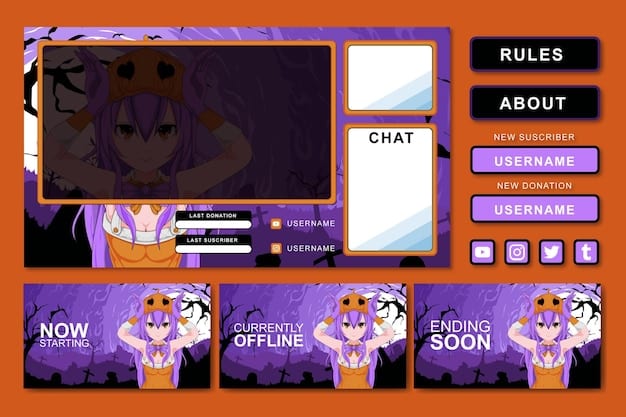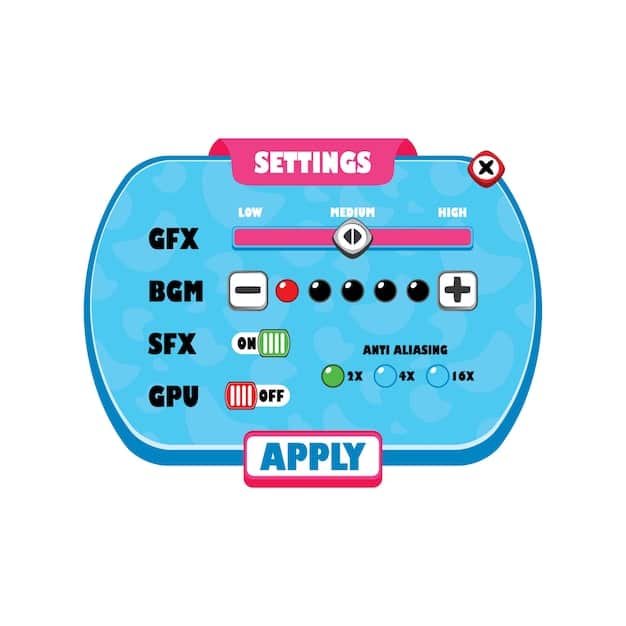Accessibility Mandates: Will They Impact Game Development by 2026?

Accessibility mandates in the US may require game developers to implement more inclusive features for players with disabilities by 2026, potentially reshaping the gaming industry.
The gaming industry is constantly evolving, and a significant aspect of this evolution involves inclusivity. The question on many developers’ minds is: will the US government implement accessibility mandates requiring game developers to implement more inclusive features for players with disabilities by 2026? This article explores the potential impact of such mandates.
The Current State of Game Accessibility
Game accessibility has become an increasingly important topic in recent years, with more developers recognizing the need to create inclusive gaming experiences for players with disabilities. However, the industry’s approach to accessibility is varied, ranging from basic implementations to more comprehensive designs.
Voluntary Efforts by Game Developers
Many game developers have taken it upon themselves to integrate accessibility features into their games. These efforts are often driven by a desire to reach a broader audience and create a more inclusive gaming community.
Limitations of Current Practices
Despite the positive steps taken by some developers, the current voluntary approach to game accessibility has limitations. Not all developers prioritize accessibility, resulting in inconsistent experiences for players with disabilities.
- Inconsistent Implementation: Accessibility features vary widely between games.
- Lack of Standardization: No uniform standards guide developers.
- Limited Awareness: Some developers may be unaware of accessibility needs.
The current landscape of game accessibility highlights the need for more consistent and standardized practices to ensure that all players can enjoy gaming experiences fully. In conclusion, while voluntary efforts are commendable, they are not enough to guarantee inclusive gaming environments universally. The potential implementation of government mandates could provide the structure and enforcement needed to achieve comprehensive accessibility across the industry.
Understanding Accessibility Mandates
Accessibility mandates are government regulations that require businesses and organizations to make their products and services accessible to people with disabilities. These mandates aim to ensure equal access and participation for all individuals, regardless of their physical or cognitive abilities.

Examples of Existing Accessibility Laws
Several countries already have accessibility laws in place, providing a framework for potential mandates in the US. These laws offer valuable insights into how accessibility can be enforced and what measures are most effective.
The Americans with Disabilities Act (ADA)
While the ADA primarily focuses on physical spaces and public accommodations, its principles of equal access and non-discrimination could be extended to digital products like video games.
- Enforcement Mechanisms: Legal recourse for non-compliance.
- Broad Impact: Affects various industries and sectors.
- Focus on Equal Access: Aims to remove barriers to participation.
Understanding the principles and applications of existing accessibility laws is crucial for game developers. These mandates not only promote inclusivity but also establish clear guidelines for ensuring equitable access. The impact of such mandates extends beyond mere compliance, fostering a more welcoming and diverse gaming community where everyone has the opportunity to enjoy and participate fully. Compliance would not only benefit players with disabilities but also enhance the overall gaming experience for all, contributing to a more inclusive and accessible digital world.
Potential Impact on Game Developers
if the US government mandates accessibility guidelines for game developers by 2026, the impact would be significant. Developers would need to integrate inclusive features into their games during the design and development phases, fundamentally changing how games are created.
Increased Development Costs
Implementing accessibility features can require additional resources, potentially increasing development costs. Developers may need to invest in training, specialized tools, and additional testing to ensure their games meet the required standards.
Changes to the Development Process
Accessibility considerations would need to be integrated into every stage of game development, from initial design to final testing. This holistic approach would require developers to rethink their workflows and prioritize inclusivity.
- Early Planning: Incorporating accessibility from the outset.
- Iterative Testing: Regularly testing with players with disabilities.
- Training and Education: Equipping development teams with the necessary skills.
The potential implementation of accessibility mandates could reshape the landscape of game development, prioritizing the inclusion of players with disabilities. While there may be concerns about increased development costs and changes to the creative process, the benefits of creating inclusive gaming experiences are substantial. Accessibility features can improve the experience for a wider range of players, fostering a more diverse and welcoming community. Ultimately, these mandates could drive innovation and lead to more engaging and enjoyable games for everyone.
Benefits of Inclusive Game Design
Inclusive game design offers numerous benefits, not just for players with disabilities but for the entire gaming community. Creating games that are accessible to a wider audience can enhance the overall gaming experience and foster a more diverse and welcoming environment.

Wider Audience Reach
By incorporating accessibility features, developers can attract a broader audience, including players with disabilities who may have previously been excluded from gaming experiences. This expanded reach can lead to increased sales and revenue.
Enhanced User Experience
Accessibility features can enhance the user experience for all players, not just those with disabilities. Customizable controls, clear subtitles, and adjustable difficulty settings can make games more enjoyable for everyone.
- Customizable Controls: Allowing players to remap buttons and adjust sensitivity.
- Clear Subtitles: Providing accurate and readable subtitles for all dialogue.
- Adjustable Difficulty: Offering a range of difficulty settings to accommodate different skill levels.
Inclusive game design offers a plethora of benefits that extend far beyond simple compliance with accessibility mandates. The broader audience reach translates to increased market opportunities, enhancing the user experience for all players, regardless of their abilities or disabilities. This approach also fosters a more inclusive community within the gaming world, promoting understanding and respect among players from diverse backgrounds. Ultimately, inclusive game design leads to more engaging and enjoyable games for everyone involved, creating a more vibrant and welcoming gaming landscape. The shift toward greater accessibility not only benefits players with disabilities but enriches the gaming culture as a whole.
Potential Challenges and Concerns
The implementation of accessibility mandates may present several challenges and concerns for game developers. Some developers worry about the potential impact on creativity and artistic expression, while others are concerned about the financial implications.
Impact on Creativity
Some developers fear that strict accessibility guidelines could stifle creativity and limit their ability to create unique and innovative gaming experiences. Meeting specific accessibility requirements may require compromises that affect the artistic vision of the game.
Financial Implications for Small Studios
Smaller independent studios may struggle to afford the resources needed to implement accessibility features, potentially putting them at a disadvantage compared to larger companies. The costs associated with training, tools, and testing can be prohibitive for studios with limited budgets.
Despite the concerns about creativity, it is possible to strike a balance between accessibility and artistic vision. Many accessibility features can be seamlessly integrated into game design without compromising the overall creative intent. For smaller studios, government support and resources can help alleviate the financial burden. Grants, tax incentives, and shared resources can make accessibility more feasible for independent developers. Addressing these challenges is essential to ensure that accessibility mandates promote inclusivity without stifling innovation or disproportionately impacting smaller studios. By fostering collaboration and providing adequate support, the gaming industry can create a more accessible and diverse gaming landscape for everyone.
Preparing for Potential Mandates
Game developers can take proactive steps to prepare for potential accessibility mandates. By embracing inclusive design principles and implementing accessibility features early on, developers can mitigate the impact of future regulations and create more inclusive gaming experiences.
Training and Education
Investing in training and education for development teams can equip them with the knowledge and skills needed to implement accessibility features effectively. This includes understanding the needs of players with disabilities and learning how to use accessibility tools and techniques.
Collaboration with Accessibility Experts
Collaborating with accessibility experts and organizations can provide valuable insights and guidance on how to create inclusive games. These experts can offer feedback on design choices, conduct accessibility testing, and provide recommendations for improvement.
- Consulting Services: Engaging with accessibility consultants.
- Community Feedback: Gathering input from players with disabilities.
- Accessibility Audits: Conducting thorough accessibility assessments.
Preparing for potential accessibility mandates is a proactive and strategic approach that benefits game developers in multiple ways. By investing in training and education, developers can foster a deeper understanding of inclusive design principles within their teams, leading to innovative and accessible gaming experiences. Collaborating with accessibility experts and organizations ensures that developers receive valuable insights and guidance, helping them create more inclusive games that meet the needs of a diverse player base. These proactive measures not only mitigate the impact of future regulations but also demonstrate a commitment to social responsibility, enhancing brand reputation and fostering a more inclusive gaming community.
| Key Point | Brief Description |
|---|---|
| 🎮 Current Accessibility Efforts | Voluntary efforts vary; mandates could standardize practices. |
| ⚖️ Potential Mandate Impact | Developers may face increased costs and process changes. |
| 👍 Benefits of Inclusivity | Wider reach, better user experience, more inclusive community. |
| 🤔 Addressing Concerns | Balance creativity with support for small studios. |
FAQ
▼
Accessibility mandates are government regulations requiring products and services to be accessible to people with disabilities, ensuring equal access and participation.
▼
Game developers would likely need to integrate inclusive features, potentially increasing development costs and changing their development processes significantly.
▼
Inclusive game design can lead to a wider audience reach, an enhanced user experience, and a more diverse and welcoming gaming community.
▼
Some developers worry about potential limitations on creativity and the financial implications, especially for smaller independent studios with limited budgets.
▼
Developers can prepare by investing in training, collaborating with experts, and proactively integrating accessibility features to mitigate any future requirements.
Conclusion
The potential implementation of accessibility mandates requiring game developers to implement more inclusive features for players with disabilities by 2026 could transform the gaming industry. While challenges exist, the benefits of inclusive game design are substantial. By taking proactive steps, developers can create more accessible and engaging gaming experiences for everyone.
![Gaming Industry Impact: How [State Name]'s Tax Incentives Reshape US Game Development Gaming Industry Impact: How [State Name]'s Tax Incentives Reshape US Game Development - Cover Image](https://commeplay.com/wp-content/uploads/2025/06/commeplay.com_10_1751055757_e90375c3_cover-360x180.jpg)




